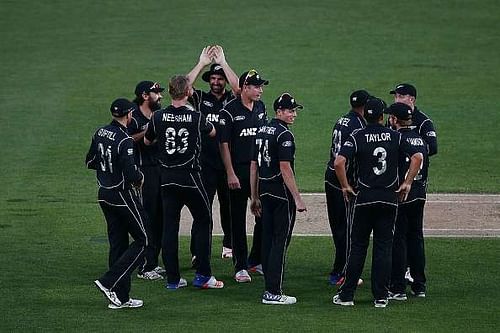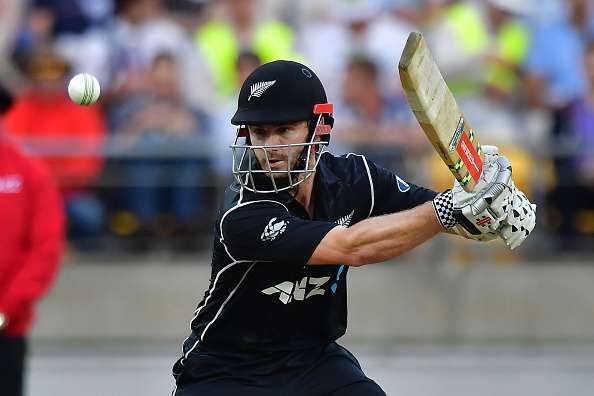
ICC Champions Trophy 2017: New Zealand Predicted XI

The finalists of the 2015 World Cup have come a long way since their pathbreaking World Cup campaign. The departure of Brendon McCullum, the man who has been hailed as the change-maker in New Zealand cricket has been compensated for by a mechanism that can be best explained as ‘a sum of parts.’
While the aggressive field placements and the risk-taking endeavours are not found in propensity under Kane Williamson’s leadership, the men built and left behind by McCullum are taking their cricket forward.
They might be far distanced from their trans-Tasman rivals in terms of the chirpiness and decibels on the field, but the ability to grind things out till the end and keep coming at their opponents are what distinguish from their more privileged brothers.
Even after the McCullum’s departure, they made it to the World T20 semi-final in 2016 and hence, it can be said that they know a way or two around these ICC tournaments.
The starting XI would be shouldered with the responsibility of taking down Australia in their tournament opener on June 2.
Martin Guptill
The veteran has blown hot and cold since his breathtaking 237 against Zimbabwe in the 2015 World Cup. However, his form disruptions aside, he still remains the closest cousin to McCullum and his style of batting. While he wouldn’t attack from ball one, the ability to hit a long ball and play long innings are the qualities that cannot be questioned. The flaccid tracks of England would certainly help.
Tom Latham
The left-handed batsman was entrusted with the responsibility of leading the team during the tri-series in Ireland, which shows the trust that the team management has in his abilities. Their most consistent batsman on the tour of India, Latham has molded his game according to the needs of limited-overs cricket and has become a lynchpin of the batting line-up. His partnership with Guptill at the top of the order would be crucial.
Kane Williamson
The captain has established himself as one of the most versatile batsmen across formats in the world and the added responsibility of captaincy doesn’t seem to have taken the sheen away from his batting. Capable of playing the role of a sheet anchor as well as that of an aggressor, Williamson would be the thread that would hold the New Zealand batting together, and his teammates would have to bat around him.
Ross Taylor
The most experienced of all New Zealand players to play the tournament, Taylor would look to play freely and aggressively, especially considering the requirement of a 300+ score almost every time that ODI cricket is played in England these days. Along with Williamson, he would have to shoulder the responsibility of tackling spinners in the middle overs and make sure that the lower order isn’t exposed too early in the game.

Neil Broom
Since his comeback in December 2016, Broom has been in prolific touch with the bat and has scored one century and three half-centuries. The second birth would surely have given the 33-year-old the much-needed inspiration and also, a permanent place in the playing XI. He must make full use of this opportunity.
Corey Anderson
Fresh off his IPL exploits, Anderson would look to translate his success onto the bigger stage and make his presence felt as an impact player in an ICC tournament. On the flaccid English tracks, Anderson’s big hitting skills, especially against pace could come in handy and he could be the difference between a par score and an intimidating total.
Luke Ronchi
The wicketkeeper-batsman has all the credentials of being a power hitter lower down the order and in the practice game also showed that he could be a replacement in case any of the openers got injured. Along with Anderson, Ronchi would shoulder the responsibilities of being the finishers that are exclusively required to maul the ball towards the death.
Mitchell Santner
The Daniel Vettori-inspired all-rounder has taken giant strides since his debut in 2015 and has now become one of the trusted all-rounders in the team. His ability to bat well under pressure was well-demonstrated during the Test series in India, and he, surprisingly, appears to be one of the better players of spin in the New Zealand line-up. His exploits with the ball during the middle overs would be more important, though.
Tim Southee
Being the spearhead of the New Zealand bowling attack, Southee would have exercise caution in terms of how he goes at the batsmen with the new ball, as runs scored off him might put pressure on the other pacers. The ability to swing the ball at a decent pace is Southee’s strength and he would look to make full use of the English conditions.
Trent Boult
While his express pace has diminished to an extent, Bolt still remains a vital cog in this lineup. The angle that a left-arm pacer creates is generally tough to encounter for right-handed batsmen and the absence of too many left-arm fast bowlers prevents the sense of familiarity. The mixture of short balls and slower ones, which he used to some effect for the Kolkata Knight Riders in the IPL, should make him the difference-maker of this attack.
Adam Milne
Milne is all about pace and hurrying the batsmen up and he must stick to doing that. Wickets at the beginning of the innings would be crucial for any team and one way to get them could be giving the batsmen no time to react whatsoever. Milne, with his fresh, young legs, would look to extract as much pace as is humanly possible from the flat English tracks.